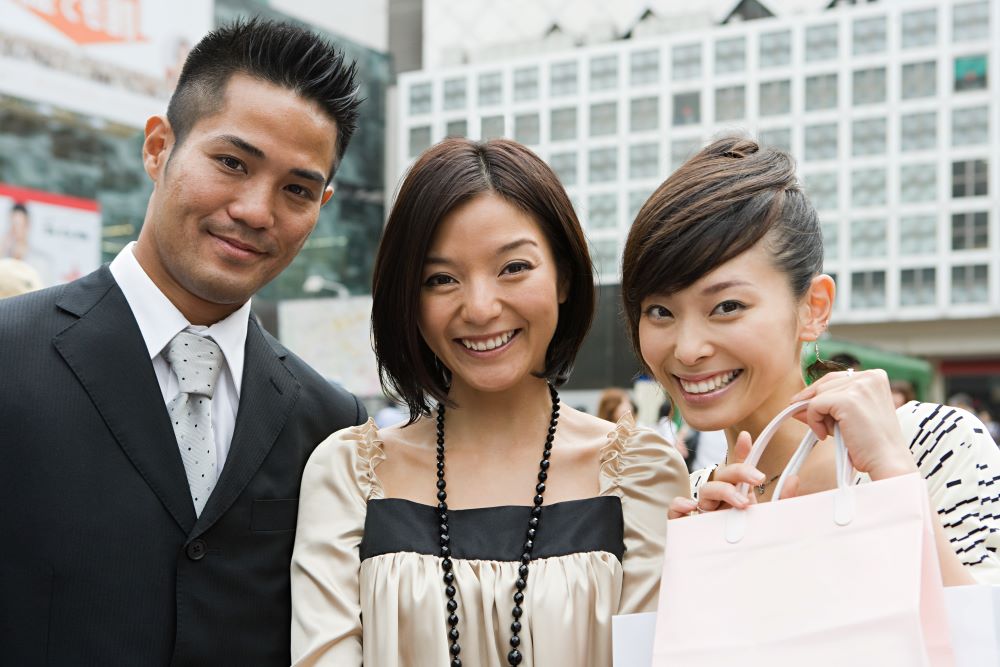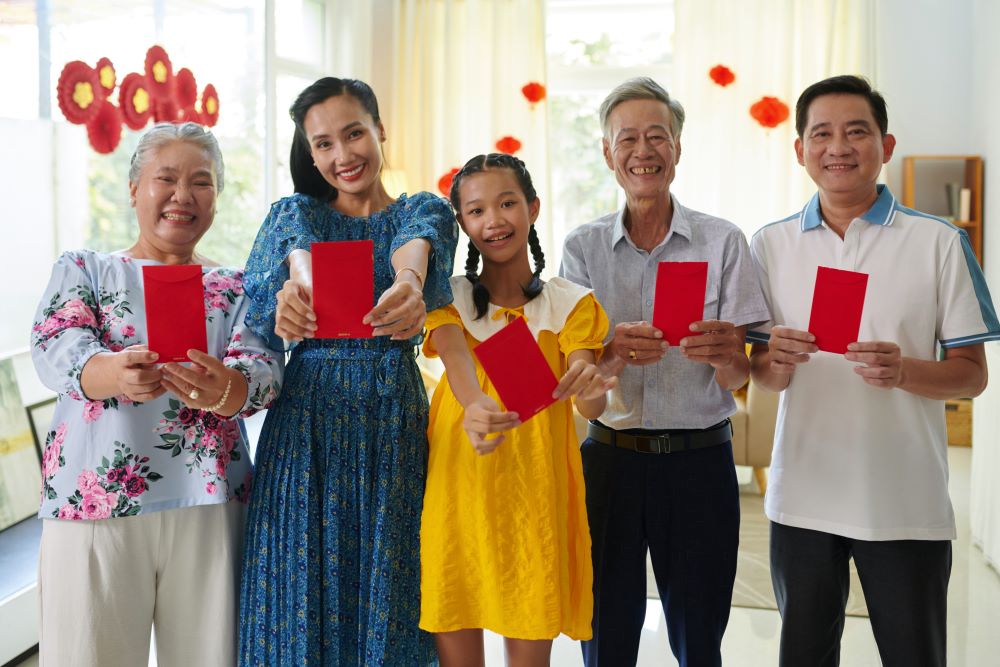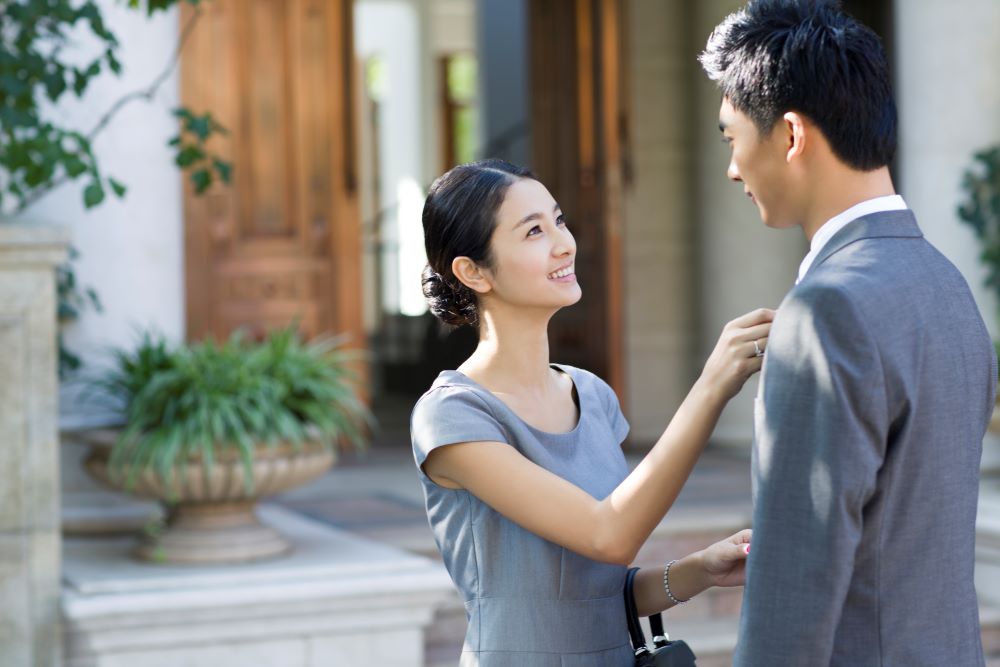Attending a Chinese wedding offers a unique opportunity to experience the rich tapestry of customs and traditions that define such joyous occasions. When selecting wedding attire, guests should be aware of cultural norms to both show respect and participate in the celebration appropriately. Traditional Chinese weddings often involve a specific etiquette, especially regarding colors and styles that guests should wear.

The palette of suitable colors for guests is deeply influenced by cultural symbolism. Wearing white, black, or red can be seen as disrespectful or inappropriate, as these colors hold specific meanings within Chinese culture.
White and black are traditionally associated with mourning, while red is typically reserved for the bride, symbolizing love and prosperity. To convey their best wishes to the newlyweds, guests might opt for attire that is both elegant and in harmony with the wedding’s color scheme.
As for traditional Chinese attire, guests may choose to wear modern formal wear or, depending on the level of tradition the wedding adheres to, may also opt for more traditional garments such as a Cheongsam or Qipao for women and a Changshan or Tang suit for men.
It’s important to seek clarity from the couple or their families regarding the expected dress code, as preferences can vary greatly from one wedding to another, reflecting a blend of both contemporary and traditional elements of Chinese weddings.
Understanding Chinese Wedding Traditions

Attending a Chinese wedding involves a keen understanding of the culture’s vibrant traditions and customs. The attire guests choose to wear should respect these traditions and reflect the importance of color and symbolism in Chinese culture.
Don’t miss out on these other top sought posts in this category:
Cultural Significance of Colors
In Chinese weddings, colors are imbued with deep meanings. Red is considered the most auspicious color, symbolizing love, joy, and prosperity. It is common to see red in decorations and attire.
Guests should generally avoid wearing red to prevent upstaging the bride, as she may wear a red dress, known as a qipao or cheongsam. Gold is another favored color, often used in accessories and details to signify wealth and fortune.
Symbolism in Wedding Attire
Chinese wedding attire is not just about beauty; it also carries significant symbolism. For instance, the qipao or cheongsam—the traditional Chinese dress for brides—is usually adorned with embroidered designs that represent good luck and happiness.
These may include, but are not limited to, dragons, phoenixes, and peonies. Gifts like red envelopes containing money are also symbolic, offered during the tea ceremony to convey blessings and good fortune.
Traditional Dresses and Suits

The traditional attire at a Chinese wedding for females includes the iconic qipao or cheongsam, fitted dresses made of silk and often richly decorated with symbolic motifs. Men may wear suits, but dark colors are preferable to respect the solemnity and significance of the event.
For both men and women, integrating elements such as a silk scarf or shawl can add both a touch of elegance and cultural appreciation.
Selecting Appropriate Attire
Choosing the right attire for a Chinese wedding is crucial to embodying the spirit of prosperity and happiness while showing respect for the couple and their traditions. This section will provide specific guidance on selecting colors and patterns that are appropriate, adhering to the dress code, and choosing the right jewelry and accessories to complement formal attire during the wedding ceremony.
Suitable Colors and Patterns
When attending a Chinese wedding, one should select attire that embraces warm-toned colors which are seen as auspicious and indicative of good fortune. Colors such as red, pink, and purple are associated with joy and prosperity, and integrating them into the outfit can signify well wishes for the couple.
- Auspicious Colors:
- Red: Symbolizes good luck and happiness
- Pink: Denotes love and joy
- Purple: Represents nobility and romance
Guests should avoid colors traditionally linked to mourning, such as black and white. Patterns that incorporate elements like the phoenix or dragon can be fitting, as they symbolize a harmonious balance, but it is best to ensure they are not overwhelming or in competition with the bridal attire.
Formal Attire Recommendations

Adherence to the dress code, typically formal or semi-formal, is an important aspect of showing respect at a Chinese wedding celebration. Attendees are generally expected to dress elegantly and appropriately to honor the significance of the event.
- Men: A dark suit complemented by a conservatively colored tie.
- Women: A formal dress or a dressy cocktail outfit that aligns with the wedding’s color recommendations.
Jewelry and Accessories Advice
Accessories should complement and not overshadow the occasion. Modest jewelry is preferred over large, ostentatious pieces. When it comes to jewelry and accessories, think understatement and elegance.
- Jewelry: Simple pieces that accentuate but do not dominate the outfit.
- Flowers: A small corsage or floral hair accessories can add a distinguished touch without being distracting.
- Hair Accessories: Subtle hairpins or combs that match the outfit can enhance the overall look while maintaining a refined appearance.
Choosing the right attire for a Chinese wedding revolves around aligning with cultural expectations to reflect respect for the traditions and contribute to the celebratory atmosphere of the wedding ceremony.
What to Avoid at a Chinese Wedding

In attending a Chinese wedding, guests should be keenly aware of specific colors and styles deemed inauspicious, as well as cultural taboos that could inadvertently cause offense.
Inauspicious Colors and Styles
When selecting an outfit, guests should steer clear of white and black, as well as any combination of black and white. These colors are traditionally associated with mourning and funerals in Chinese culture. Wearing them to a wedding could be interpreted as bringing bad luck to the marital union. Instead, one should dress appropriately for the joyous occasion by choosing other hues.
- White: Avoid entirely, as it’s linked to funerals.
- Black: Considered inauspicious, best to stay away from.
- Black and White Combo: Represents sorrow, not celebration.
Understanding Cultural Taboos
Cultural awareness extends beyond wardrobe choices to actions and gifts offered to the couple. Presenting gifts wrapped in white, black, or blue paper is discouraged because they symbolize mourning. In Chinese weddings, it’s essential to convey goodwill and happiness through your attire and the presents you bring to ensure you’re amplifying, not dampening, the celebratory spirit of the event.
- Gifts: Select gifts that symbolize life and joy, not those linked to mourning or bad luck.
- Actions: Be conscious of customs and polite gestures to avoid misunderstandings.
Modern Interpretations and Western Influences

As Chinese weddings assimilate more elements from Western traditions, contemporary fashion choices reflect a blend of both cultures, with modifications that tailor to personal tastes and an evolving bridal industry.
Contemporary Fashion Choices
In recent times, one observes a noticeable shift in bridal attire at Chinese weddings, influenced significantly by Western weddings. Brides often choose to wear a Western-style wedding gown for the ceremony, bringing in a touch of global bridal fashion.
Websites like wedoneo.com showcase a variety of gowns that fuse modern aesthetics with traditional motifs, catering to the contemporary bride’s desire for something both chic and culturally respectful.
Grooms, on the other hand, are increasingly opting for suits that follow Western conventions but might incorporate Chinese elements like Mandarin collars or brocade trims, as noted by fashion analysts at thebridaltip.com. Such choices indicate a harmonious marriage between the contemporary need for individuality and adherence to time-honored Chinese customs.
Accessories too now echo this cultural synergy. Where traditional jewelry might have exclusively featured Chinese designs, present-day selections include Western-inspired pieces that brides and guests alike choose to complement their outfits.
For instance, Jessica Rankin, a noted designer featured on thebridaltip.com, suggests using sophisticated, simple jewelry that doesn’t overshadow the inherent beauty of traditional Chinese wedding attire.
This blend of tastes is also evident in guest attire. It is becoming more common for attendees in the United States to wear contemporary formalwear while respecting cultural guidelines, such as avoiding the color red to not upstage the bride.
In essence, these modern interpretations breathe fresh life into wedding ceremonies, all the while ensuring the core sentiments of Chinese traditions are kept intact. The thoughtful integration of Western influences within Chinese weddings exemplifies how cultural exchange can create beautiful, contemporary celebrations of love and union.
Final Preparations and Considerations

When gearing up for a Chinese wedding, it’s imperative for guests to ensure their attire fulfills two key aspects: adherence to any dress code specified by the couple and cultural respectfulness. These final steps are pivotal to support the success of the event and guarantee a comfortable experience for everyone involved.
Checking the Requested Dress Code
Confirm the Details:
- Check the wedding invitation for any specific dress code requirements.
- If in doubt, consider reaching out directly to the hosts for clarification.
It is also advisable for guests to understand what to expect at the event to appropriately determine the formality of their outfit.
Cultural Appreciation and Sensitivity
Embrace Cultural Traditions:
- Demonstrate understanding and appreciation for Chinese cultural norms to show support and respect for the couple.
- Be mindful that certain colors, like red, are usually reserved for the bride, while black and white are typically associated with mourning.
Selecting the Attire:
- Opt for warm-toned colors (e.g., pink or purple) which symbolize happiness and good fortune, aligning with the occasion’s joyful nature.
To ensure a culturally sensitive presence, one should review common practices at Chinese weddings to avoid any potential missteps. Discover insights about appropriate attire for a Chinese wedding and learn more about colors to avoid as part of the preparations.
Wrapping Up with Thoughtful Gifts

When attending a Chinese wedding, guests often wonder about the appropriate gift to bring. The traditional way to convey one’s congratulations and best wishes to the couple is through red envelopes, known as ‘hóngbāo’. These envelopes, typically filled with cash, are not only gifts but also symbols of good fortune and wealth.
What to Gift:
- Red Envelopes: Should contain cash in even numbers, reflecting the balance of yin and yang.
- Jewelry or Ornaments: Gold or jade items signify prosperity and fortune.
- Home Goods: Practical items for the couple’s new life together.
Amount of Cash:
- Close relatives: Higher amounts as a symbol of their support.
- Friends/Acquaintances: a Smaller, though still generous, sum.
Presentation:
- The envelope should be decorated with auspicious symbols or characters that represent love and marriage.
- A simple wish written on the envelope can add a personal touch.
By choosing your gift thoughtfully, you respect Chinese traditions and show your good will towards the newlyweds. Remember, it’s not the monetary value, but the sentiment of wishing the couple a bountiful life that counts.
Frequently Asked Questions

What attire is appropriate for a female guest at a Chinese wedding?
Female guests should opt for an elegant dress or a formal attire that is not too revealing. It is important to avoid overshadowing the bride, so overly extravagant dresses should be avoided.
Is there a specific dress code for male guests attending a Chinese wedding?
Male guests are typically expected to dress in a suit and tie for a Chinese wedding. Darker colors are preferred, but one should stay away from black as it can symbolize mourning.
Are there any colors that should be avoided when selecting an outfit for a Chinese wedding?
Red is often reserved for the bride and should be avoided by guests to not compete for attention. Similarly, black and white are typically avoided as they connote mourning and purity, respectively.
What cultural traditions should non-Asian guests be aware of when dressing for a Chinese wedding?
Non-Asian guests should be mindful of the sanctity of certain colors and symbols in Chinese culture. Wearing modest and respectful attire is essential when attending a Chinese wedding.
How does the wardrobe differ for guests at a traditional Chinese wedding versus a western-style Chinese wedding?
At a traditional Chinese wedding, guests may observe more adherence to color symbolism and may see the bridal party in specific traditional garments like the qipao. A western-style Chinese wedding may incorporate a mix of Western dress codes and traditional elements.
Can guests wear green, or is it considered inappropriate at a Chinese wedding?
Green can typically be worn by guests at a Chinese wedding. However, it’s always wise to inquire with the hosts about any specific dress code preferences or cultural considerations.
Related posts:
What to Wear to a Sikh Wedding: A Guide to Traditional Attire and Etiquette
Can You Wear a Jumpsuit to a Black Tie Event? Best Expert Tips
Can You Wear Linen to a Wedding? A Comprehensive Style Guide for Wedding Guests
What Hand Do Irish Wear Wedding Rings? A Comprehensive Guide to Irish Wedding Traditions & Customs
20 Stunning Half Up Half Down Braid Hairstyles for Bridesmaids
15 Stunning Curly Hairstyles for Your Bridesmaids

Serena & Dominic are a married couple and parents to 3 wonderful children. They plan weddings, run multiple small businesses, and curate wedding events.
By giving you everything you need to make your dream wedding attainable, you can eliminate stress, get the ‘wedding glow,’ and focus on spending this rocking day with the person you adore. Discover their podcast for more information




